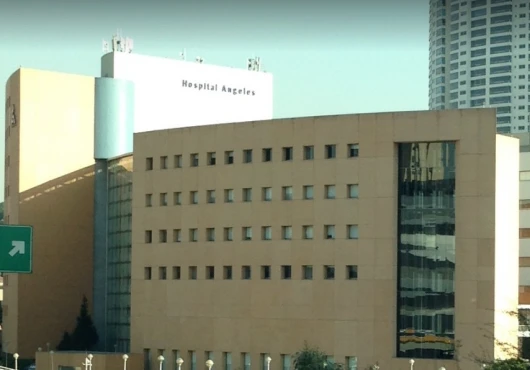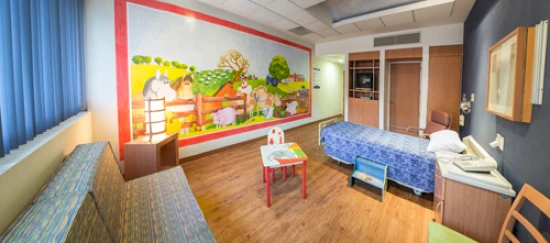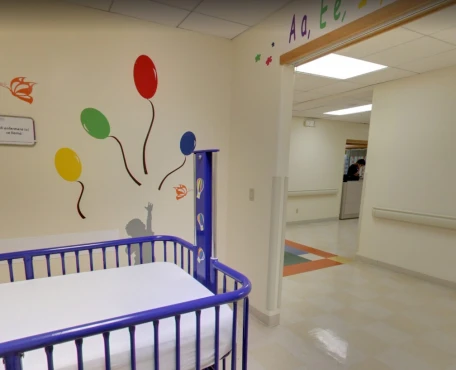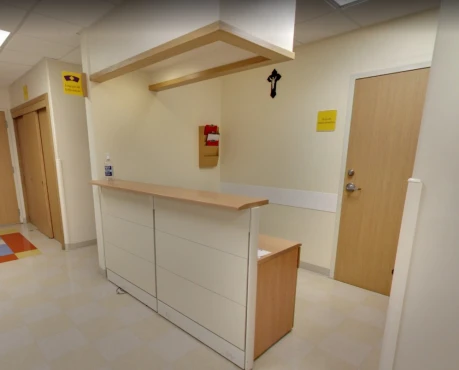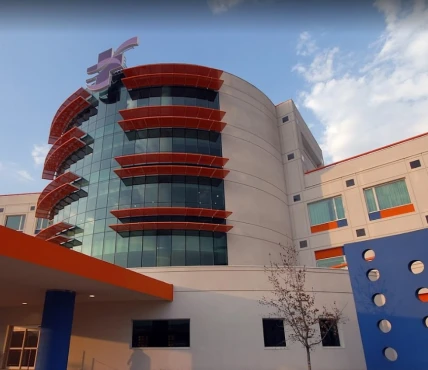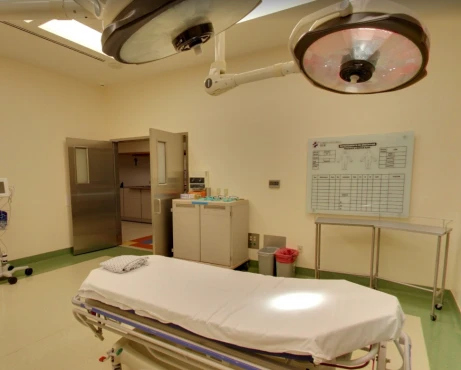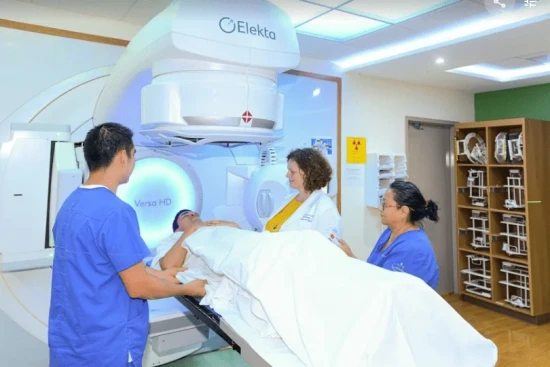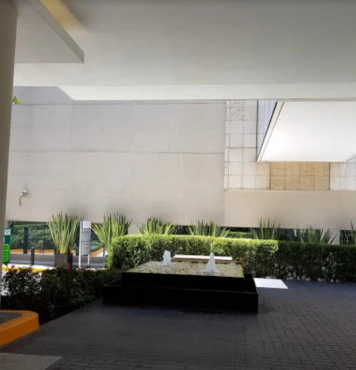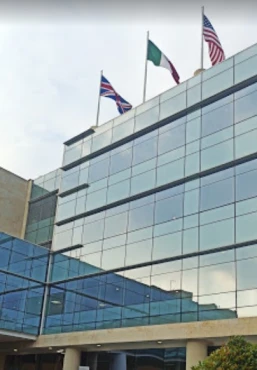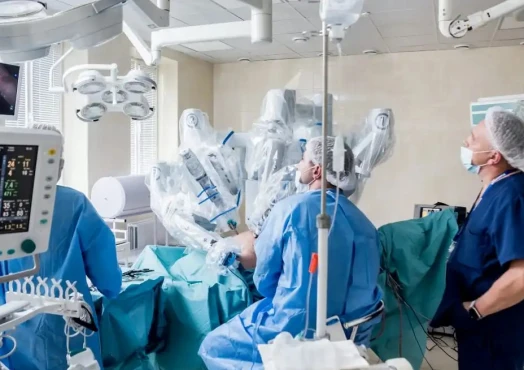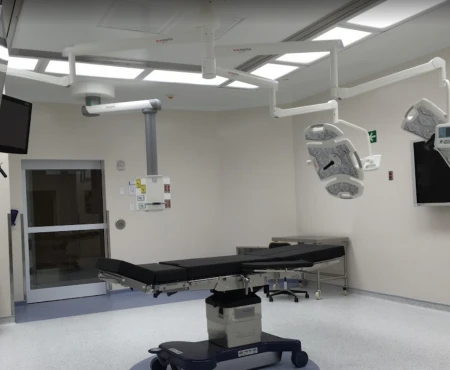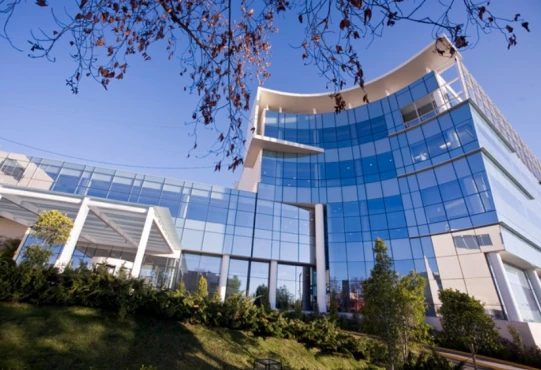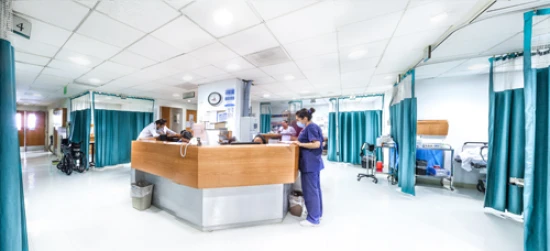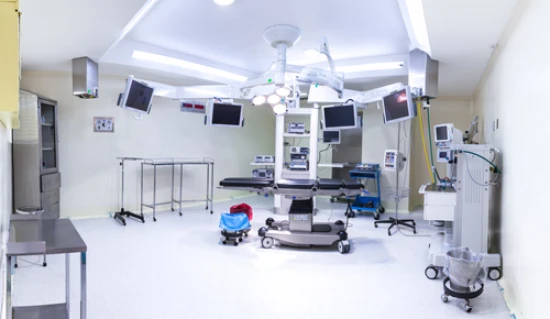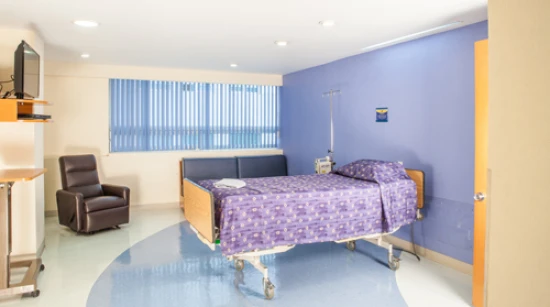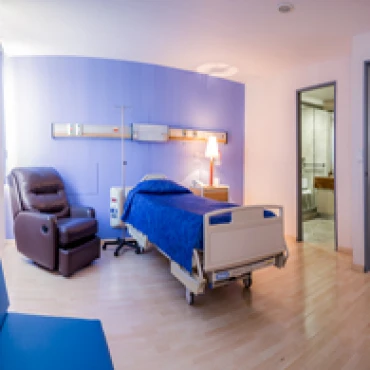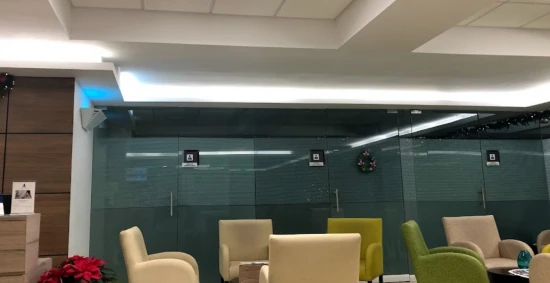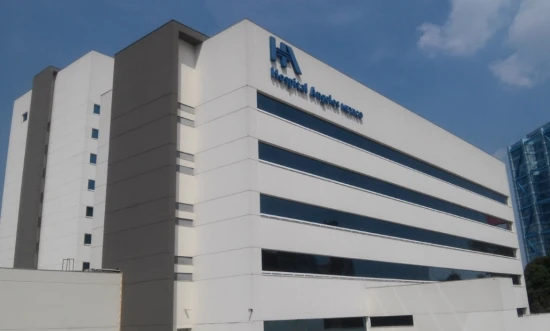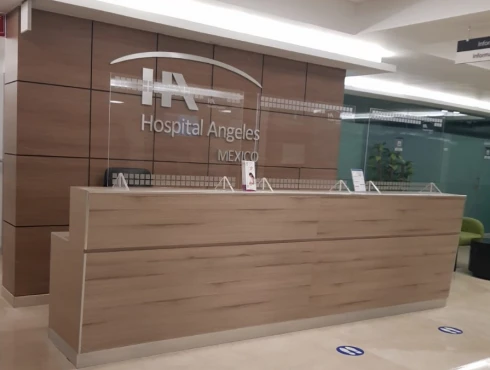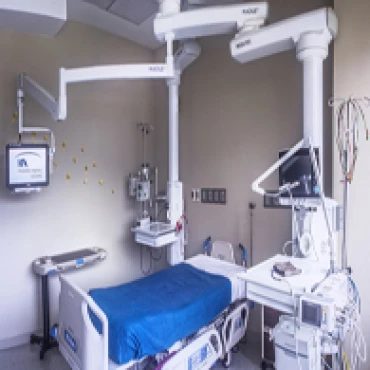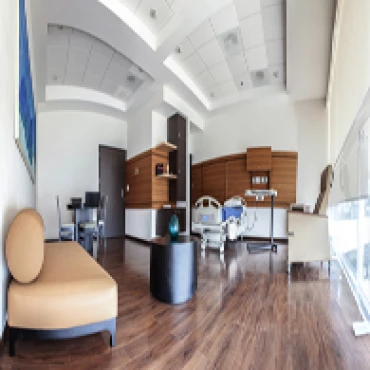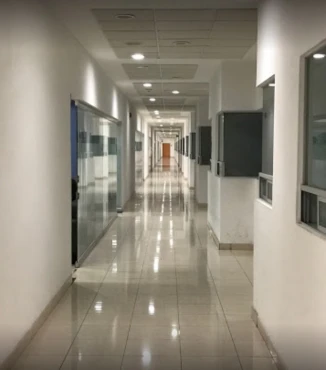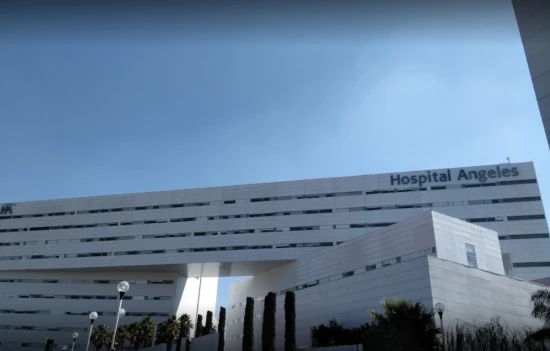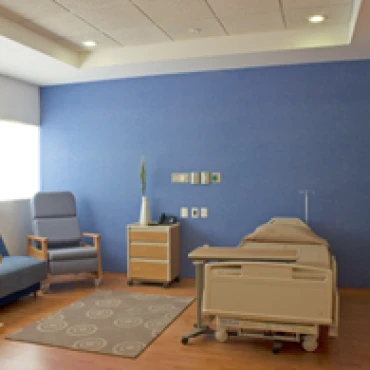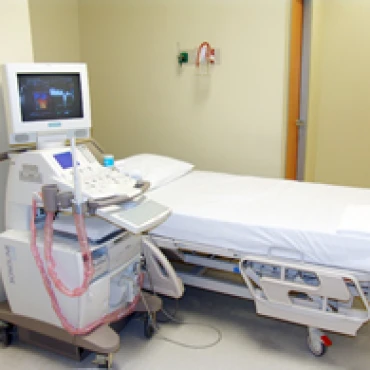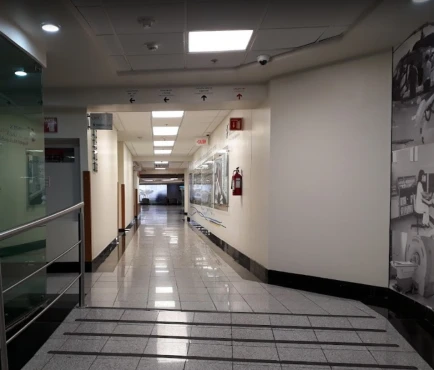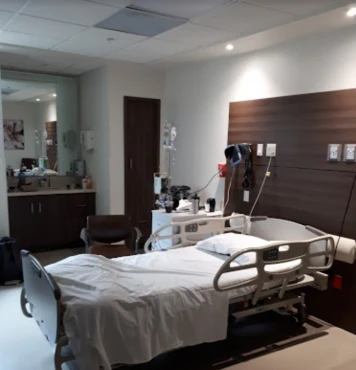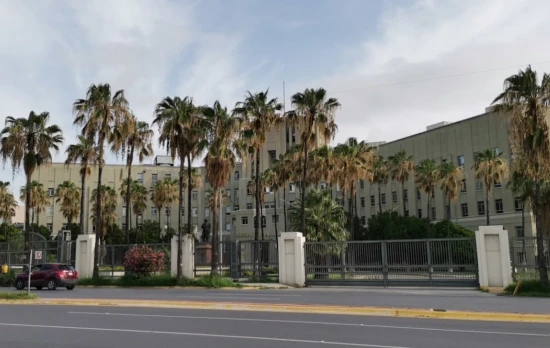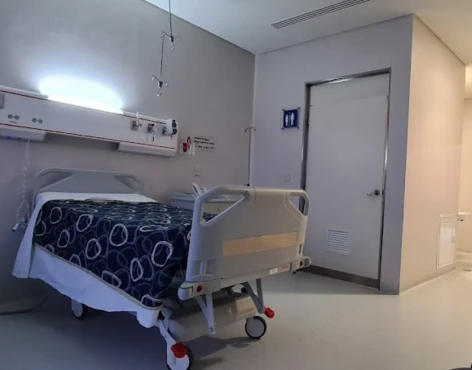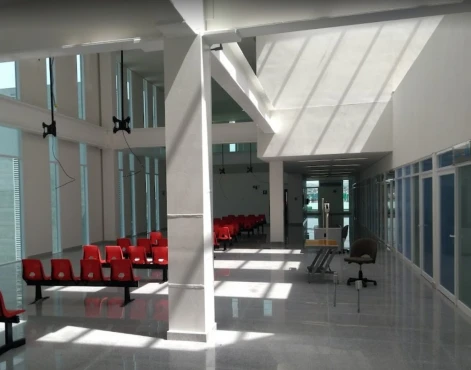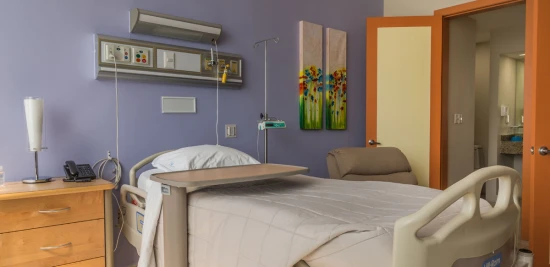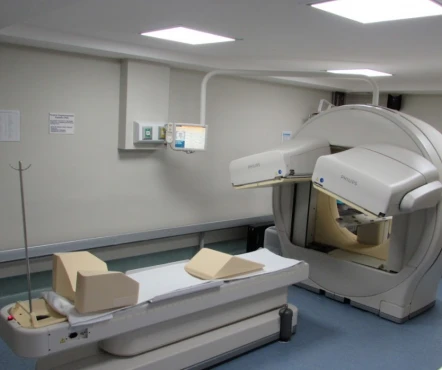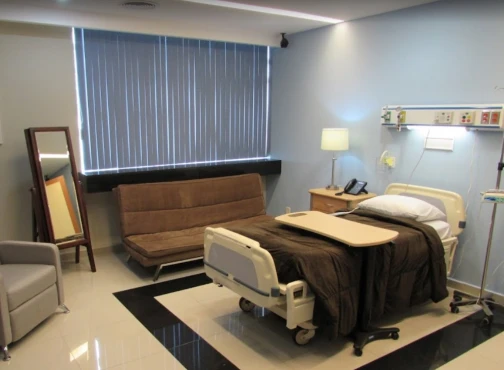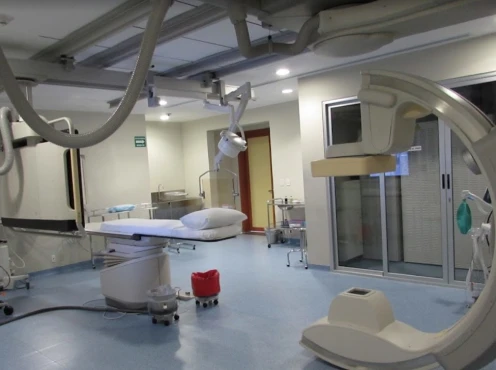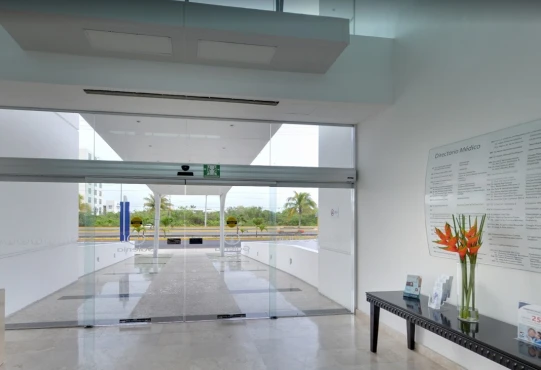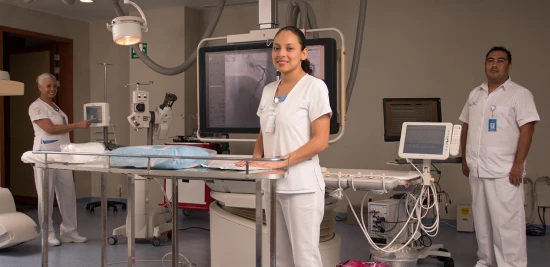Ebstein anomaly treatment in 11 Cardiac surgery clinics in Mexico
Top
Clinics
Ratings
Diseases
More info
Quick navigation
11 clinics specializing in Cardiac surgery providing treatment of
Ebstein anomaly
Ebstein anomaly is a rare congenital heart defect where the tricuspid valve is malformed and displaced into the right ventricle. It can cause blood flow problems and may require surgical intervention for correction and improved cardiac function.
Read more...
disease in Mexico.
You can select a specific city
5
from Clementina London
October 20, 2022
Going there for the first time, getting information and seeing the Doctor was fast and easy.
1
from David Chase
February 05, 2022
Went to see a doctor who claimed he had been trained at Johns Hopkins. His degrees were completely fake. Unreal. Avoid this hospital at all costs.
3
from Elena Arreguín Osuna
April 12, 2021
The worst service when I was going out from an ambulatory surgery. The person from collection apartments and invoice was rude and unprofessional. The service was very good.
Prices for popular procedures:
-
Ebstein anomaly correction
≈ $15,926
-
Dual chamber pacemaker insertion
≈ $7,820
-
Coronary artery bypass graft (CABG)
≈ $25,360
-
Heart valve replacement
≈ $2,733
-
Heart valve repair
≈ $23,067
-
Aortic valve replacement (AVR)
≈ $25,423
-
Mitral valve replacement (MVR)
≈ $20,539
-
Transcatheter aortic valve replacement (TAVR)
≈ $36,997
-
Off-pump coronary artery bypass surgery
≈ $18,833
4.0
5 reviews
5
from Clementina London
October 20, 2022
Going there for the first time, getting information and seeing the Doctor was fast and easy.
1
from David Chase
February 05, 2022
Went to see a doctor who claimed he had been trained at Johns Hopkins. His degrees were completely fake. Unreal. Avoid this hospital at all costs.
3
from Elena Arreguín Osuna
April 12, 2021
The worst service when I was going out from an ambulatory surgery. The person from collection apartments and invoice was rude and unprofessional. The service was very good.

Mexico City, Mexico
Specializations: Cardiac surgery, Vascular surgery, Thoracic surgery, Neurosurgery, Spine surgery, Orthopedic surgery, Oncology
5
from Karina Wade-Gledhill
September 04, 2023
Hands down, one of the best hospitals I've ever been to. Within minutes of bringing my dad here, the entire team was assisting him with his high blood pressure and symptoms of a stroke. The staff is very friendly and attentive. It's important to keep in mind that this is a private hospital, so if you don't have insurance, they will ask you to deposit a certain amount of money into the account. Make sure to mention that you are self-pay. So they can bundle everything up into one packet. I was so impressed with the ability to be able to just walk down to the administrative office and ask what my balance was and get that information within seconds. It is worth every single penny they charge.
5
from Marisol Mayares
July 04, 2023
I was a patient her for 2 nights and it had truly been one a the better experiences of being at a hospital ever. Staff was attentive, cleanliness was amazing and the over all experience with my surgeon was amazing! Highly recommend! Coming from the USA, this is like being at a 5 star hotel!
5
from C Rbt
April 10, 2022
I can’t begin to express how much I enjoyed my visit here. From Admission, medical, food service everyone was so kind! Also, food was a 10/10!
Prices for popular procedures:
-
Ebstein anomaly correction
≈ $15,926
-
Dual chamber pacemaker insertion
≈ $7,820
-
Coronary artery bypass graft (CABG)
≈ $25,360
-
Heart valve replacement
≈ $2,733
-
Heart valve repair
≈ $23,067
-
Aortic valve replacement (AVR)
≈ $25,423
-
Mitral valve replacement (MVR)
≈ $20,539
-
Transcatheter aortic valve replacement (TAVR)
≈ $36,997
-
Off-pump coronary artery bypass surgery
≈ $18,833
3.5
5 reviews
5
from Karina Wade-Gledhill
September 04, 2023
Hands down, one of the best hospitals I've ever been to. Within minutes of bringing my dad here, the entire team was assisting him with his high blood pressure and symptoms of a stroke. The staff is very friendly and attentive. It's important to keep in mind that this is a private hospital, so if you don't have insurance, they will ask you to deposit a certain amount of money into the account. Make sure to mention that you are self-pay. So they can bundle everything up into one packet. I was so impressed with the ability to be able to just walk down to the administrative office and ask what my balance was and get that information within seconds. It is worth every single penny they charge.
5
from Marisol Mayares
July 04, 2023
I was a patient her for 2 nights and it had truly been one a the better experiences of being at a hospital ever. Staff was attentive, cleanliness was amazing and the over all experience with my surgeon was amazing! Highly recommend! Coming from the USA, this is like being at a 5 star hotel!
5
from C Rbt
April 10, 2022
I can’t begin to express how much I enjoyed my visit here. From Admission, medical, food service everyone was so kind! Also, food was a 10/10!
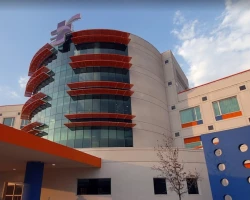
Monterrey, Mexico
Specializations: Cardiac surgery, Vascular surgery, Thoracic surgery, Neurosurgery, Spine surgery, Orthopedic surgery, Oncology
Languages: English
South Hospital From General Medical Consultation and with a Specialist to highly specialized treatments, at Hospital Sur we take care of you Committed to the
read more
1
from Charleston Coryea
January 22, 2023
I wasn't going to write a review (I'm so over all this), but I feel compelled to after reading a review that was extremely similar to what I experienced here for COVID-19 treatment.
I tested COVID-positive on January 3rd and started Paxlovid. I saw my neighborhood doctor on January 4th. I am vaccinated (and boosted) but am at high risk with asthma. I was given steroids and breathing medicine. I was instructed to go to the hospital if I got worse.
I got worse. The following evening, my oxygen dropped below 80. Scared, I called an ambulance and requested to be taken to this hospital as it was supposed to be the best. They took my oxygen in the ambulance and immediately gave me oxygen. I was on oxygen the whole time in the ambulance.
I was taken off oxygen when I arrived as my saturation reached the high 90s. I requested the antiviral remdesivir. The doctor refused to give me the medicine. I explained how my condition worsened despite days on Paxlovid, steroid injections, oral steroids, bronchodilators, and rescue inhalers. He could not have cared less.
I requested to leave as the doctor was not going to treat me (he charged me, though). The doctor told me there were other ID specialists. I requested to speak to one of them, and the doctor left. While waiting, someone else came in and said there were no other ID specialists there, so I paid and left. It should be noted my saturation had fallen to 92% by that time.
I struggled at home with symptoms for the next few days. I continued testing positive after completing Paxlovid. My condition worsened, and I returned to the neighboring doctor about a week after leaving the hospital. Still symptomatic and COVID-positive, he examined me and found pneumonia. My labs were also abnormal, showing evidence I had developed blood clots due to COVID-19. He prescribed medicine for pneumonia and clots (which worked). All this could have been prevented.
Trying to get my medical records from this hospital afterwords (for insurance) was like pulling teeth. It took forever to get my records, and when I finally did, I was shocked. The doctor noted that I said things I never did. My signature was forged on the documents.
Worst hospital experience ever. Very expensive and received no treatment. The administration is a nightmare as well. Avoid it if possible.
2
from Rasmus Duun
September 12, 2022
We have been living In 3 different countries for the past 9 years, never experienced anything as bad. We have a a top insurance but they “suddenly” only excepts credit card payment. Stayed for additional 5 hours because they did not let’s leave. No one speaks English except the doctors. However, doctors are very competent and reason for not one but two stars.
3
from Кris Kostina
December 08, 2019
Absurdly (like, for real) expensive for a very mediocre level of service. I went to the urgency center, and i found it very useless that on every stage (reception, triage, first and second doctor) they asked me the same questions. The doctor took more than half an hour to arrive. The receptionist has misinformed me and I did a very expensive (since I’m traveling abroad) call which wasn’t necessary at that moment. Also, several times there were several people coming in at a time, also unnecessary, certainly didn’t create a feeling of comfort. The room in which I was attended was small and the door was never closed.
Prices for popular procedures:
-
Ebstein anomaly correction
≈ $15,926
-
Dual chamber pacemaker insertion
≈ $7,820
-
Coronary artery bypass graft (CABG)
≈ $25,360
-
Heart valve replacement
≈ $2,733
-
Heart valve repair
≈ $23,067
-
Aortic valve replacement (AVR)
≈ $25,423
-
Mitral valve replacement (MVR)
≈ $20,539
-
Transcatheter aortic valve replacement (TAVR)
≈ $36,997
-
Off-pump coronary artery bypass surgery
≈ $18,833
4.4
5 reviews
1
from Charleston Coryea
January 22, 2023
I wasn't going to write a review (I'm so over all this), but I feel compelled to after reading a review that was extremely similar to what I experienced here for COVID-19 treatment.
I tested COVID-positive on January 3rd and started Paxlovid. I saw my neighborhood doctor on January 4th. I am vaccinated (and boosted) but am at high risk with asthma. I was given steroids and breathing medicine. I was instructed to go to the hospital if I got worse.
I got worse. The following evening, my oxygen dropped below 80. Scared, I called an ambulance and requested to be taken to this hospital as it was supposed to be the best. They took my oxygen in the ambulance and immediately gave me oxygen. I was on oxygen the whole time in the ambulance.
I was taken off oxygen when I arrived as my saturation reached the high 90s. I requested the antiviral remdesivir. The doctor refused to give me the medicine. I explained how my condition worsened despite days on Paxlovid, steroid injections, oral steroids, bronchodilators, and rescue inhalers. He could not have cared less.
I requested to leave as the doctor was not going to treat me (he charged me, though). The doctor told me there were other ID specialists. I requested to speak to one of them, and the doctor left. While waiting, someone else came in and said there were no other ID specialists there, so I paid and left. It should be noted my saturation had fallen to 92% by that time.
I struggled at home with symptoms for the next few days. I continued testing positive after completing Paxlovid. My condition worsened, and I returned to the neighboring doctor about a week after leaving the hospital. Still symptomatic and COVID-positive, he examined me and found pneumonia. My labs were also abnormal, showing evidence I had developed blood clots due to COVID-19. He prescribed medicine for pneumonia and clots (which worked). All this could have been prevented.
Trying to get my medical records from this hospital afterwords (for insurance) was like pulling teeth. It took forever to get my records, and when I finally did, I was shocked. The doctor noted that I said things I never did. My signature was forged on the documents.
Worst hospital experience ever. Very expensive and received no treatment. The administration is a nightmare as well. Avoid it if possible.
2
from Rasmus Duun
September 12, 2022
We have been living In 3 different countries for the past 9 years, never experienced anything as bad. We have a a top insurance but they “suddenly” only excepts credit card payment. Stayed for additional 5 hours because they did not let’s leave. No one speaks English except the doctors. However, doctors are very competent and reason for not one but two stars.
3
from Кris Kostina
December 08, 2019
Absurdly (like, for real) expensive for a very mediocre level of service. I went to the urgency center, and i found it very useless that on every stage (reception, triage, first and second doctor) they asked me the same questions. The doctor took more than half an hour to arrive. The receptionist has misinformed me and I did a very expensive (since I’m traveling abroad) call which wasn’t necessary at that moment. Also, several times there were several people coming in at a time, also unnecessary, certainly didn’t create a feeling of comfort. The room in which I was attended was small and the door was never closed.

Mexico City, Mexico
Specializations: Cardiac surgery, Vascular surgery, Thoracic surgery, Oncology
We are an institution that cares for the health and safety of our patients through the best medical practices. We distinguish ourselves by being supportive
read more
1
from Ivonne Lazcano
November 22, 2023
Terrible service, old rooms, they charge you ghost expenses. I believe that the morning nurses are not paid well, because they do things reluctantly, they make faces at you, they do not come soon, they are not organized in patient care, they do not disinfect the thermometers every time they come to take signs. .
Very expensive and they give you the cheapest paper on the market.
As a tip: it improves attention when you call public relations.
Better care and lower cost in smaller private hospitals.
Being here is similar to the IMSS, only here you go faster, but from then on it's terrible.
The Angeles Mocel Hospital branch is good, quality and the staff is extremely friendly.
5
from Charles Wurts
June 21, 2023
I found myself sick in Mexico City and after some hesitation I took myself to Angeles. I am from the United States and my review will be from the perspective of someone who is used to USA healthcare. Angeles was amazing when it came to everything important. My intake was awkward but the woman who helped me did everything she could for me since I was incapable at that time. The doctors where amazing and everything to do with my diagnostic evaluation was efficient and professional. (however, unlike in the USA, the doctors took there time to perform a complete evaluation and were not rushed). The emergency room care was also excellent. When I left the emergency room and went to a normal room things were not as good, in fact I was pretty angry with my nurse there.
I was blessed to have a friend in Columbia to use for translation but everything to do with being in the regular room and paying my bill was extremely awkward. Hospital translation services were never made available to me.
Regardless, I feel like the healthcare I received was excellent and I would never hesitate to use Hospital Angeles. I found my care here to be at least equivalent if not superior to the care I'm used to in the USA
1
from Narciso Dominguez
August 02, 2022
To my fellow US Citizens I suggest this hospital but please don’t get services from Dr. Gilberto Hernandez Bautista. Unprofessional anesthesiologist. Be sure he won’t be involved in your surgery.
Prices for popular procedures:
-
Ebstein anomaly correction
≈ $15,926
-
Dual chamber pacemaker insertion
≈ $7,820
-
Coronary artery bypass graft (CABG)
≈ $25,360
-
Heart valve replacement
≈ $2,733
-
Heart valve repair
≈ $23,067
-
Aortic valve replacement (AVR)
≈ $25,423
-
Mitral valve replacement (MVR)
≈ $20,539
-
Transcatheter aortic valve replacement (TAVR)
≈ $36,997
-
Off-pump coronary artery bypass surgery
≈ $18,833
3.3
5 reviews
1
from Ivonne Lazcano
November 22, 2023
Terrible service, old rooms, they charge you ghost expenses. I believe that the morning nurses are not paid well, because they do things reluctantly, they make faces at you, they do not come soon, they are not organized in patient care, they do not disinfect the thermometers every time they come to take signs. .
Very expensive and they give you the cheapest paper on the market.
As a tip: it improves attention when you call public relations.
Better care and lower cost in smaller private hospitals.
Being here is similar to the IMSS, only here you go faster, but from then on it's terrible.
The Angeles Mocel Hospital branch is good, quality and the staff is extremely friendly.
5
from Charles Wurts
June 21, 2023
I found myself sick in Mexico City and after some hesitation I took myself to Angeles. I am from the United States and my review will be from the perspective of someone who is used to USA healthcare. Angeles was amazing when it came to everything important. My intake was awkward but the woman who helped me did everything she could for me since I was incapable at that time. The doctors where amazing and everything to do with my diagnostic evaluation was efficient and professional. (however, unlike in the USA, the doctors took there time to perform a complete evaluation and were not rushed). The emergency room care was also excellent. When I left the emergency room and went to a normal room things were not as good, in fact I was pretty angry with my nurse there.
I was blessed to have a friend in Columbia to use for translation but everything to do with being in the regular room and paying my bill was extremely awkward. Hospital translation services were never made available to me.
Regardless, I feel like the healthcare I received was excellent and I would never hesitate to use Hospital Angeles. I found my care here to be at least equivalent if not superior to the care I'm used to in the USA
1
from Narciso Dominguez
August 02, 2022
To my fellow US Citizens I suggest this hospital but please don’t get services from Dr. Gilberto Hernandez Bautista. Unprofessional anesthesiologist. Be sure he won’t be involved in your surgery.
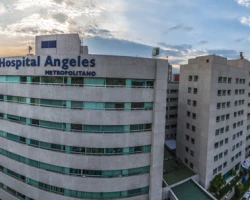
Mexico City, Mexico
Specializations: Cardiac surgery, Vascular surgery, Thoracic surgery, Neurosurgery, Orthopedic surgery, Oncology
1
from Santiago Duran
September 05, 2023
This is the worst hospital experience I've had in my life. I arrived to the emergency room at noon and left at 4 PM whit out being attended to. They charged me $290 USD upon arrival and then made me whit for 2 hours. When they finally call me in, the doctor looked at me 30 seconds and ordered an ultrasonic check that NEVER came. Finally I decided to leave as the lack of attention, the negligence, the lack of information, the complete disregard for my problem and obviously the time spent doing absolutely nothing and listening to the nurses laugh and joke around out side my cubicle, got the best of me. When I decided to leave they made me what another 45 minutes just to return my deposit and give me back my ID which was retained! (Yes the take your official ID and they DON'T give it back until they secure your payment. This is illegal by the way) by the receptionists.
By the way, I came to the ER with an internal bleeding due to a fall. The Traumatology "Dr. Jenny" gave me 30 seconds to look at the huge hematoma I had, and then one hour later another 30 seconds to give me the "self leave paper" to sign. NEVER She gave me any indication or had the intention to help me. In fact she said "there is nothing I can do".
AVOID THIS EMERGENCY ROOM AT ALL COSTS!
1
from Sridhar Bhavani
May 27, 2022
Worst hospitals only into making money I could have got my treatment done cheaper in the USA...they just dump what ever they want for kidney stone laser treatment and stay was a bomb 210000 pesos+80000 for doctors fees...they will empty ur pockets with sweet talks beware doctors are good you could use their services in other hospitals....the taxation department should look into these scamsters
5
from Gabriel Cristian De La Prada
November 09, 2017
Así a surgeon I can strongly recommend this hospital, superb service,and no,j don't work there
Prices for popular procedures:
-
Ebstein anomaly correction
≈ $15,926
-
Dual chamber pacemaker insertion
≈ $7,820
-
Coronary artery bypass graft (CABG)
≈ $25,360
-
Heart valve replacement
≈ $2,733
-
Heart valve repair
≈ $23,067
-
Aortic valve replacement (AVR)
≈ $25,423
-
Mitral valve replacement (MVR)
≈ $20,539
-
Transcatheter aortic valve replacement (TAVR)
≈ $36,997
-
Off-pump coronary artery bypass surgery
≈ $18,833
3.7
5 reviews
1
from Santiago Duran
September 05, 2023
This is the worst hospital experience I've had in my life. I arrived to the emergency room at noon and left at 4 PM whit out being attended to. They charged me $290 USD upon arrival and then made me whit for 2 hours. When they finally call me in, the doctor looked at me 30 seconds and ordered an ultrasonic check that NEVER came. Finally I decided to leave as the lack of attention, the negligence, the lack of information, the complete disregard for my problem and obviously the time spent doing absolutely nothing and listening to the nurses laugh and joke around out side my cubicle, got the best of me. When I decided to leave they made me what another 45 minutes just to return my deposit and give me back my ID which was retained! (Yes the take your official ID and they DON'T give it back until they secure your payment. This is illegal by the way) by the receptionists.
By the way, I came to the ER with an internal bleeding due to a fall. The Traumatology "Dr. Jenny" gave me 30 seconds to look at the huge hematoma I had, and then one hour later another 30 seconds to give me the "self leave paper" to sign. NEVER She gave me any indication or had the intention to help me. In fact she said "there is nothing I can do".
AVOID THIS EMERGENCY ROOM AT ALL COSTS!
1
from Sridhar Bhavani
May 27, 2022
Worst hospitals only into making money I could have got my treatment done cheaper in the USA...they just dump what ever they want for kidney stone laser treatment and stay was a bomb 210000 pesos+80000 for doctors fees...they will empty ur pockets with sweet talks beware doctors are good you could use their services in other hospitals....the taxation department should look into these scamsters
5
from Gabriel Cristian De La Prada
November 09, 2017
Así a surgeon I can strongly recommend this hospital, superb service,and no,j don't work there
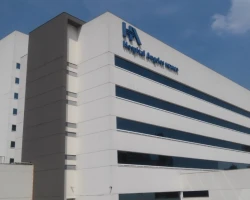
Mexico City, Mexico
Specializations: Cardiac surgery, Vascular surgery, Thoracic surgery, Neurosurgery, Orthopedic surgery, Oncology
1
from Michell Gm
December 05, 2023
If you have the opportunity to be treated at this hospital MISS IT!!
The service leaves a lot to be desired, admission, cash and public relations are extremely inefficient, they do everything wrong
No
They are empathetic with patients and do not provide solutions of any kind.
The facilities are being remodeled and they have no qualms about drilling you in the
Head at 2:00 am, they have no respect for the patients nor do they give a damn about their peace of mind and rest.
Terrible service!! In addition to their times being ridiculous to deliver an account, register and charge you: more than 8 hours and they can't do it!!!
1
from MIMOX ONE (mimox230)
August 22, 2023
Without a doubt, one of my worst experiences, from the hospital...everything is super neglected and mistreated, even the staff, especially the person: ROSARIO LAGOS, she is supposed to be the head of public relations, she was asked several questions and she never knew how to answer adequately. a person who does not have tact or sense to be a head of public relations, the hospital should pay more attention to the people it hires in its positions, not just out of friendship, handing over positions with great positions to people who are too big for the position….
Do not waste time and do not contract the service provided by this hospital, TAKE THE ANGELES DEL PEDREGAL HOSPITAL AS AN EXAMPLE
5
from Marycnso
August 01, 2023
My experience with the doctors, anesthesiologists and nurses was very human. Super nice and attentive nurses. They were always on the lookout. The doctors are very professional and explained everything to me in detail.
Those who complain about the insurance and that the income is late. You should see this with your manager, but it is normal, even upon admission, they mention that the insurance takes 4 to 6 hours to respond and this has nothing to do with the hospital.
Prices for popular procedures:
-
Ebstein anomaly correction
≈ $15,926
-
Dual chamber pacemaker insertion
≈ $7,820
-
Coronary artery bypass graft (CABG)
≈ $25,360
-
Heart valve replacement
≈ $2,733
-
Heart valve repair
≈ $23,067
-
Aortic valve replacement (AVR)
≈ $25,423
-
Mitral valve replacement (MVR)
≈ $20,539
-
Transcatheter aortic valve replacement (TAVR)
≈ $36,997
-
Off-pump coronary artery bypass surgery
≈ $18,833
3.2
5 reviews
1
from Michell Gm
December 05, 2023
If you have the opportunity to be treated at this hospital MISS IT!!
The service leaves a lot to be desired, admission, cash and public relations are extremely inefficient, they do everything wrong
No
They are empathetic with patients and do not provide solutions of any kind.
The facilities are being remodeled and they have no qualms about drilling you in the
Head at 2:00 am, they have no respect for the patients nor do they give a damn about their peace of mind and rest.
Terrible service!! In addition to their times being ridiculous to deliver an account, register and charge you: more than 8 hours and they can't do it!!!
1
from MIMOX ONE (mimox230)
August 22, 2023
Without a doubt, one of my worst experiences, from the hospital...everything is super neglected and mistreated, even the staff, especially the person: ROSARIO LAGOS, she is supposed to be the head of public relations, she was asked several questions and she never knew how to answer adequately. a person who does not have tact or sense to be a head of public relations, the hospital should pay more attention to the people it hires in its positions, not just out of friendship, handing over positions with great positions to people who are too big for the position….
Do not waste time and do not contract the service provided by this hospital, TAKE THE ANGELES DEL PEDREGAL HOSPITAL AS AN EXAMPLE
5
from Marycnso
August 01, 2023
My experience with the doctors, anesthesiologists and nurses was very human. Super nice and attentive nurses. They were always on the lookout. The doctors are very professional and explained everything to me in detail.
Those who complain about the insurance and that the income is late. You should see this with your manager, but it is normal, even upon admission, they mention that the insurance takes 4 to 6 hours to respond and this has nothing to do with the hospital.

Mexico City, Mexico
Specializations: Cardiac surgery, Vascular surgery, Thoracic surgery, Neurosurgery, Spine surgery, Orthopedic surgery, Oncology
1
from Gaby Fabián
November 19, 2023
The attention from the nursing staff left much to be desired, it is supposed to be a first-class hospital for such poor service. Omission of analgesics, failure to follow instructions left in writing by the doctor. They ask about food preferences and allergies so they can ignore them. Violation of patients' rights, even though all staff have them attached to their chests on their identification. Not a cheap bill (>200k) for such bad service.
5
from Aketzally López
August 31, 2023
It is a very clean, beautiful hospital, obviously also in the area, the consultations are a little expensive, but they take great care of you. I fully recommend Doctor David Mazza 🫰🏼
5
from Eva Nemeth-Csoka
July 07, 2023
A modern, clean, well-located and very well-equipped hospital. The rooms are spacious, well-organized and the facilities are of excellent quality. Very large parking lot, the signs in the hallways are very clear, but the staff is also very friendly and helpful, they are happy to help you if you can't find something. At the entrance there is a Starbucks Coffee with fresh and tasty food and on the other side a grocery and drinks store. From the entrance there is a very nice view.
Prices for popular procedures:
-
Ebstein anomaly correction
≈ $15,926
-
Dual chamber pacemaker insertion
≈ $7,820
-
Coronary artery bypass graft (CABG)
≈ $25,360
-
Heart valve replacement
≈ $2,733
-
Heart valve repair
≈ $23,067
-
Aortic valve replacement (AVR)
≈ $25,423
-
Mitral valve replacement (MVR)
≈ $20,539
-
Transcatheter aortic valve replacement (TAVR)
≈ $36,997
-
Off-pump coronary artery bypass surgery
≈ $18,833
3.8
5 reviews
1
from Gaby Fabián
November 19, 2023
The attention from the nursing staff left much to be desired, it is supposed to be a first-class hospital for such poor service. Omission of analgesics, failure to follow instructions left in writing by the doctor. They ask about food preferences and allergies so they can ignore them. Violation of patients' rights, even though all staff have them attached to their chests on their identification. Not a cheap bill (>200k) for such bad service.
5
from Aketzally López
August 31, 2023
It is a very clean, beautiful hospital, obviously also in the area, the consultations are a little expensive, but they take great care of you. I fully recommend Doctor David Mazza 🫰🏼
5
from Eva Nemeth-Csoka
July 07, 2023
A modern, clean, well-located and very well-equipped hospital. The rooms are spacious, well-organized and the facilities are of excellent quality. Very large parking lot, the signs in the hallways are very clear, but the staff is also very friendly and helpful, they are happy to help you if you can't find something. At the entrance there is a Starbucks Coffee with fresh and tasty food and on the other side a grocery and drinks store. From the entrance there is a very nice view.
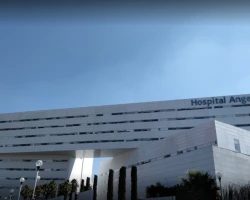
Puebla, Mexico
Specializations: Cardiac surgery, Vascular surgery, Thoracic surgery, Neurosurgery, Spine surgery, Orthopedic surgery, Oncology
4
from Happyrich
June 13, 2023
It seems to be the best among the many hospitals in Monterrey for health check-ups.
All hospitals are friendly...
I was satisfied with the most detailed check. I was able to see the doctor more comfortably than at other general hospitals.
The food in the last week was tastier than any other hospital.
5
from Mayra Rubalcava
April 08, 2022
Great hospital. Better service than some hospital in the US.
1
from Kelvin Newman
March 04, 2022
No good guadlupe mendodoza ,I no pay you
Prices for popular procedures:
-
Ebstein anomaly correction
≈ $15,926
-
Dual chamber pacemaker insertion
≈ $7,820
-
Coronary artery bypass graft (CABG)
≈ $25,360
-
Heart valve replacement
≈ $2,733
-
Heart valve repair
≈ $23,067
-
Aortic valve replacement (AVR)
≈ $25,423
-
Mitral valve replacement (MVR)
≈ $20,539
-
Transcatheter aortic valve replacement (TAVR)
≈ $36,997
-
Off-pump coronary artery bypass surgery
≈ $18,833
4.2
5 reviews
4
from Happyrich
June 13, 2023
It seems to be the best among the many hospitals in Monterrey for health check-ups.
All hospitals are friendly...
I was satisfied with the most detailed check. I was able to see the doctor more comfortably than at other general hospitals.
The food in the last week was tastier than any other hospital.
5
from Mayra Rubalcava
April 08, 2022
Great hospital. Better service than some hospital in the US.
1
from Kelvin Newman
March 04, 2022
No good guadlupe mendodoza ,I no pay you
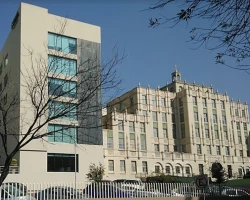
Monterrey, Mexico
Specializations: Cardiac surgery, Vascular surgery, Thoracic surgery, Neurosurgery, Spine surgery, Orthopedic surgery, Oncology
Languages: English
Since its foundation in 1934, Muguerza Hospital, today CHRISTUS MUGUERZA Hospital Alta Especialidad, has remained at the forefront of medicine in Nuevo León. 87 years
read more
5
from Paola Hernandez
September 22, 2023
Good attention
5
from Jazmani Ochoa
December 02, 2022
They take good care of patients, they are treated as they should be. The facilities are well maintained. The parking lot is ample.
2
from Sandy Alcocer
October 15, 2021
Madhouse, worst service at ER
Prices for popular procedures:
-
Ebstein anomaly correction
≈ $15,926
-
Dual chamber pacemaker insertion
≈ $7,820
-
Coronary artery bypass graft (CABG)
≈ $25,360
-
Heart valve replacement
≈ $2,733
-
Heart valve repair
≈ $23,067
-
Aortic valve replacement (AVR)
≈ $25,423
-
Mitral valve replacement (MVR)
≈ $20,539
-
Transcatheter aortic valve replacement (TAVR)
≈ $36,997
-
Off-pump coronary artery bypass surgery
≈ $18,833
4.0
5 reviews
5
from Paola Hernandez
September 22, 2023
Good attention
5
from Jazmani Ochoa
December 02, 2022
They take good care of patients, they are treated as they should be. The facilities are well maintained. The parking lot is ample.
2
from Sandy Alcocer
October 15, 2021
Madhouse, worst service at ER
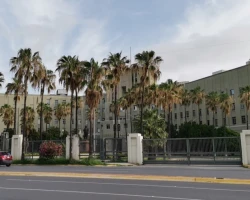
Monterrey, Mexico
Specializations: Cardiac surgery, Vascular surgery, Thoracic surgery, Neurosurgery, Spine surgery, Orthopedic surgery, Oncology
We are a Hospital Institution at the service of society, belonging to the Faculty of Medicine of the Autonomous University of Nuevo León; through which
read more
1
from Denise Mendoza
August 19, 2023
My cousin went to this hospital to have this removed since it went through her finger. Doctor Carmona Estrada Mayra attended my cousin and told her that anesthesia was not needed, plus she was really busy. My cousin sat through all that pain of having it pulled out with no pain reliever. That doctor had also told her that even if she opened up her finger that she wouldn’t put no anesthesia on it. After all that pain my cousin went to another hospital because there was a broken piece of the object still left in her finger. This Doctor needs to go because she couldn’t even perform this normal task to help out her patient.
1
from Natalie Perez
June 26, 2023
Bad experience at this hospital with doctors not being honest and staff is rude. Their not helpful at all and there just out for your money. They have no true concern about your family member. They lie about how the patient is doing and if anything they make them worst to your expense. It was truly heartbreaking to realize how bad this hospital is. Don’t take your family members here. Find a different place.Funny thing is that I wrote a detail review of everything that happened and for some reason it’s not on here. Point is don’t trust them with your love ones. Question what there doing and why. Research to see if they even need certain things they ask you for and what the purpose of it is.
2
from Jesús María Aguascalientes
November 12, 2022
A lot of patience in the external consultation Archive and in the consultations themselves, sometimes the doctors do not arrive or they assign others who should not and you have to make an appointment again in the Archive. But they are no longer scheduling APPOINTMENTS for 2023 because they don't have a 2023 Agenda. Well that's what they say...
Prices for popular procedures:
-
Ebstein anomaly correction
≈ $15,926
-
Coronary artery bypass graft (CABG)
≈ $25,360
-
Off-pump coronary artery bypass surgery
≈ $18,833
-
Fontan procedure
≈ $19,021
-
Radiofrequency ablation (RFA)
≈ $15,081
-
Catheter cardiac ablation
≈ $10,535
-
Patent ductus arteriosus (PDA) ligation in children
≈ $11,709
-
Electrophysiology study (EPS)
≈ $2,797
-
Catheter cryoablation
≈ $13,483
3.9
5 reviews
1
from Denise Mendoza
August 19, 2023
My cousin went to this hospital to have this removed since it went through her finger. Doctor Carmona Estrada Mayra attended my cousin and told her that anesthesia was not needed, plus she was really busy. My cousin sat through all that pain of having it pulled out with no pain reliever. That doctor had also told her that even if she opened up her finger that she wouldn’t put no anesthesia on it. After all that pain my cousin went to another hospital because there was a broken piece of the object still left in her finger. This Doctor needs to go because she couldn’t even perform this normal task to help out her patient.
1
from Natalie Perez
June 26, 2023
Bad experience at this hospital with doctors not being honest and staff is rude. Their not helpful at all and there just out for your money. They have no true concern about your family member. They lie about how the patient is doing and if anything they make them worst to your expense. It was truly heartbreaking to realize how bad this hospital is. Don’t take your family members here. Find a different place.Funny thing is that I wrote a detail review of everything that happened and for some reason it’s not on here. Point is don’t trust them with your love ones. Question what there doing and why. Research to see if they even need certain things they ask you for and what the purpose of it is.
2
from Jesús María Aguascalientes
November 12, 2022
A lot of patience in the external consultation Archive and in the consultations themselves, sometimes the doctors do not arrive or they assign others who should not and you have to make an appointment again in the Archive. But they are no longer scheduling APPOINTMENTS for 2023 because they don't have a 2023 Agenda. Well that's what they say...

Aguascalientes, Mexico
Specializations: Cardiac surgery, Vascular surgery, Thoracic surgery, Neurosurgery, Spine surgery, Orthopedic surgery, Oncology
Considered one of the most important health institutions in the center of the country, Hidalgo Hospital receives patients from neighboring states such as Jalisco, Zacatecas,
read more
5
from Kim Winkler
October 18, 2023
A big thank you to the staff of Galenia hospital!!! During our stay this month, my friend became suddenly ill and had to be hospitalized. Being from the US, I must say that it was a bit nerve wracking to have to seek medical help in a foreign country. However, our experience was entirely positive!!! To the concierge staff - Eric and Alfredo - I wish to extend tremendous gratitude!!! Your translation services as well as your kindness and hospitality were both indispensable and greatly appreciated!!!! I also wish to extend my gratitude to Dr. Allejandro (I don't remember your last name); not only were you genuinely gracious, you discovered the problem quickly and got my friend back on her feet in no time at all!!! Again, thank you Hospital Galenia for such a good experience!!! You took great care of my friend and went above and beyond in showing us courtesy and consideration!!!
1
from sharon leon
March 14, 2023
BEWARE IF YOU ARE A TOURIST! My father was hospitalized on a family trip to Cancun. He was transported to this hospital and needed emergency surgery This hospital FAILED him. They wouldn’t even give him so much as saline or an antibiotic without payment in FULL. WE WERE CHARGED $4,000 FOR. He went 8 HOURS sitting on an emergency room bed when he should have been in surgery. THEY DEMANDED 50,000 DOLLARS PAID IN FULL BEFORE STARTING ANY CARE AND THAT WAS JUST FOR THE SURGERY. WE OFFERED TO PAY 25,000 SO THEY COULD START AND THEY REFUSED. WE OFFERED TO PAY THE REST THE NEXT DAY AND THEY REFUSED. WE TRANSFERRED MY FATHER TO THE OTHER HOSPITAL BECAUSE WE THOUGHT HE WAS GOING TO DIE. WE FELT USELESS WHILE THEY HAD ALL THE POWER TO DO SOMETHING THEY CHOSE TO DO NOTHING!!!!! THEY ARE SCAMMERS AND NOTHING MORE. ITS A MIRACLE MY FATHER SURVIVED AND ONLY BY THE HELP OF GOD WAS MY FATHER ABLE TO COME BACK HOME WITH US. JUST TO TOP IT OFF WHEN WE WERE PAST THE TRAUMA THAT THESE PEOPLE PUT US THROUGH THEY HAD THE AUDACITY TO BILL IS THE OXYGEN THAT WAS ADMINISTERED DURING THE AMBULANCE RIDE!! 2000 DOLLARS!!!!!!!! THEY WOULD RATHER WATCH YOUR FAMILY MEMBER DIE, I WILL NEVER FORGET THEIR DISGUSTING SMUG FACES
4
from Reina Cruz
March 09, 2023
It feels very comfortable being there. Olivia is the best. She arranges everything for you when you are from outside the country of Mexico. You show up and all is prepared. Her personality is very welcoming and friendly. I love not having to worry about the stress of paper work especially since i don't know Spanish well. All her subordinates speak English as well and are all very nice. Galenia might be costly however the peace of mind you get not being stresses out with paperwork helps a lot. I don't even need to Contact my insurance. They do everything for you. Best service. The receptionist at imaging are a bit slow and don't know any English. But the staff attending to you in the radiation area are super friendly and helpful. I see many people complain about the price. This is a private hospital and will be costly. It is the same in my own country. Private hospitals cost a lot but if you have insurance and you are not from Mexico, then I highly recommend using their tourism concierge. They are a great help and speak English. They are all very nice and helpful. I have had the pleasure of meeting and being assisted by Olivia (who is the best), Ellen, Ricardo and another guy i cant remember his name. Not sure if it is Daniel or something with a D. That was over 2 years ago i met him. They arranged everything with my insurance prior to going there. I just showed up and Olivia walked me through everything. I was in and out as quick as possible. No long waiting. Use the concierge service they have. It really helps you from stressing about paperwork and payments. My journey at Galenia started September 2021 and I continue into 2023......
Prices for popular procedures:
-
Ebstein anomaly correction
≈ $15,926
-
Coronary artery bypass graft (CABG)
≈ $25,360
-
Off-pump coronary artery bypass surgery
≈ $18,833
-
Fontan procedure
≈ $19,021
-
Cardiac catheterization
≈ $2,419
-
Percutaneous ASD closure
≈ $10,002
-
Percutaneous closure of ventricular septal defect (VSD)
≈ $10,308
-
Coronary catheterization
≈ $1,819
-
Percutaneous coronary intervention (PCI) with stent insertion
≈ $8,008
3.4
5 reviews
5
from Kim Winkler
October 18, 2023
A big thank you to the staff of Galenia hospital!!! During our stay this month, my friend became suddenly ill and had to be hospitalized. Being from the US, I must say that it was a bit nerve wracking to have to seek medical help in a foreign country. However, our experience was entirely positive!!! To the concierge staff - Eric and Alfredo - I wish to extend tremendous gratitude!!! Your translation services as well as your kindness and hospitality were both indispensable and greatly appreciated!!!! I also wish to extend my gratitude to Dr. Allejandro (I don't remember your last name); not only were you genuinely gracious, you discovered the problem quickly and got my friend back on her feet in no time at all!!! Again, thank you Hospital Galenia for such a good experience!!! You took great care of my friend and went above and beyond in showing us courtesy and consideration!!!
1
from sharon leon
March 14, 2023
BEWARE IF YOU ARE A TOURIST! My father was hospitalized on a family trip to Cancun. He was transported to this hospital and needed emergency surgery This hospital FAILED him. They wouldn’t even give him so much as saline or an antibiotic without payment in FULL. WE WERE CHARGED $4,000 FOR. He went 8 HOURS sitting on an emergency room bed when he should have been in surgery. THEY DEMANDED 50,000 DOLLARS PAID IN FULL BEFORE STARTING ANY CARE AND THAT WAS JUST FOR THE SURGERY. WE OFFERED TO PAY 25,000 SO THEY COULD START AND THEY REFUSED. WE OFFERED TO PAY THE REST THE NEXT DAY AND THEY REFUSED. WE TRANSFERRED MY FATHER TO THE OTHER HOSPITAL BECAUSE WE THOUGHT HE WAS GOING TO DIE. WE FELT USELESS WHILE THEY HAD ALL THE POWER TO DO SOMETHING THEY CHOSE TO DO NOTHING!!!!! THEY ARE SCAMMERS AND NOTHING MORE. ITS A MIRACLE MY FATHER SURVIVED AND ONLY BY THE HELP OF GOD WAS MY FATHER ABLE TO COME BACK HOME WITH US. JUST TO TOP IT OFF WHEN WE WERE PAST THE TRAUMA THAT THESE PEOPLE PUT US THROUGH THEY HAD THE AUDACITY TO BILL IS THE OXYGEN THAT WAS ADMINISTERED DURING THE AMBULANCE RIDE!! 2000 DOLLARS!!!!!!!! THEY WOULD RATHER WATCH YOUR FAMILY MEMBER DIE, I WILL NEVER FORGET THEIR DISGUSTING SMUG FACES
4
from Reina Cruz
March 09, 2023
It feels very comfortable being there. Olivia is the best. She arranges everything for you when you are from outside the country of Mexico. You show up and all is prepared. Her personality is very welcoming and friendly. I love not having to worry about the stress of paper work especially since i don't know Spanish well. All her subordinates speak English as well and are all very nice. Galenia might be costly however the peace of mind you get not being stresses out with paperwork helps a lot. I don't even need to Contact my insurance. They do everything for you. Best service. The receptionist at imaging are a bit slow and don't know any English. But the staff attending to you in the radiation area are super friendly and helpful. I see many people complain about the price. This is a private hospital and will be costly. It is the same in my own country. Private hospitals cost a lot but if you have insurance and you are not from Mexico, then I highly recommend using their tourism concierge. They are a great help and speak English. They are all very nice and helpful. I have had the pleasure of meeting and being assisted by Olivia (who is the best), Ellen, Ricardo and another guy i cant remember his name. Not sure if it is Daniel or something with a D. That was over 2 years ago i met him. They arranged everything with my insurance prior to going there. I just showed up and Olivia walked me through everything. I was in and out as quick as possible. No long waiting. Use the concierge service they have. It really helps you from stressing about paperwork and payments. My journey at Galenia started September 2021 and I continue into 2023......

Cancún, Mexico
Specializations: Cardiac surgery, Vascular surgery, Thoracic surgery, Neurosurgery, Spine surgery, Orthopedic surgery, Oncology
We are the first High Specialty hospital in the Southeast of Mexico We have a state-of-the-art infrastructure with advanced medical technology and a team of
read more
Clinics grouping by rating
Clinic with the highest rating of 4.4 — ABC Medical Center - Campus Observatorio in Mexico City, Mexico, clinic with the most reviews number of 557 — Hospital Angeles Mexico in Mexico City, Mexico.
With rating 4.0 and over — 4 clinics .
Countries with the highest number of clinics treating the diseases:
Ebstein anomaly:
worldwide
325 clinics
India
29 clinics
Turkey
28 clinics
Brazil
21 clinics
Germany
18 clinics
Mexico
11 clinics
Related procedures:
Procedures are likely to be used for Ebstein anomaly treatment:
Ebstein anomaly correction
and
Fetal cardiac interventions
.
Quick navigation
Procedures
Diseases
- Balloon angioplasty and stenting of aorta coarctation $9,832 - $9,832
- Cardiac catheterization $2,419 - $2,419
- Coarctectomy in children $12,554 - $12,554
- Coil embolization of intracardiac shunts and fistulas $4,539 - $4,539
- Extracorporeal membrane oxygenation (ECMO) by request
- Heart tumor surgery $14,877 - $14,877
- Intraaortic balloon pump (IABP) procedure $2,710 - $2,710
- Left atrial appendage occlusion $9,922 - $9,922
- MAZE procedure $13,929 - $13,929
- Minimally invasive valvular heart surgery with valve repair or replacement by request
- NobleStitch™ PFO closure procedure by request
- Open-heart intracardiac foreign body removal $17,772 - $17,772
- Patent ductus arteriosus (PDA) open heart surgery in adults $5,952 - $5,952
- Percutaneous ASD closure $10,002 - $10,002
- Percutaneous closure of ventricular septal defect (VSD) ≈ $10,308
- Rashkind procedure $8,517 - $8,517
- Surgery for tetralogy of Fallot (TOF) in adults $10,361 - $10,361
- Surgical ventricular restoration (SVR) $14,161 - $14,161
- Transcatheter closure of patent ductus arteriosus (PDA) in adults $8,621 - $8,621
- Ventricular septal defect (VSD) repair $17,007 - $17,007
- Aortic valve insufficiency
- Aortic valve stenosis
- Atrial fibrillation (AFib)
- Coarctation of the aorta (CoA)
- Foreign bodies in the heart
- Heart failure
- Heart tumor
- Heart valve disease
- Mitral valve insufficiency
- Mitral valve stenosis
- Multivalvular disease
- Myocardial infarction (MI)
- Pneumonia
- Pulmonary hypertension
- Sinus of valsalva aneurysm (SOVA)
- Tricuspid valve insufficiency
- Tricuspid valve stenosis
- Valvular insufficiency
- Ventricular aneurysm
- Ventricular septal rupture (VSR)

